[Transport union research] crisis has come, where will the future of the 3000 air freight forwarding go?
- 2018-04-28 11:01
- Air freight forwarding Internet logistics transportation railway, road transportation, water transportation, air transportation
Nowadays, the world is moving towards the era of Internet of things. Many traditional industries actively embracing the Internet have been significantly improved in efficiency and speed of development. In the aviation logistics industry, who can embrace the Internet earlier, use the Internet to improve their industrial efficiency and improve customer experience, and who will win the future. This is an inevitable trend. Today's research on Transport unio helps you to spy on the opportunities of air cargo network.
1. In recent years, the market size of logistics and transportation industry;
2, subdivide the volume and current situation of water, iron, public and air transport market;
3, what are the development points of air freight forwarding under the domestic air cargo environment?
4. How do air freight forwarders break through the existing model?
1. The current situation of the logistics and transportation market
1.1 overall logistics transportation scale
In recent years, although the growth rate of China's total social logistics has slowed down, the steady growth of the economy has also pushed the rigid demand of the logistics industry. In 2017, the total social logistics volume of the whole country was 252 trillion and 800 billion yuan, up by 6.7% over the same period last year. The total social logistics volume showed a steady growth trend throughout the year, and the profit level of the logistics industry was flourishing.
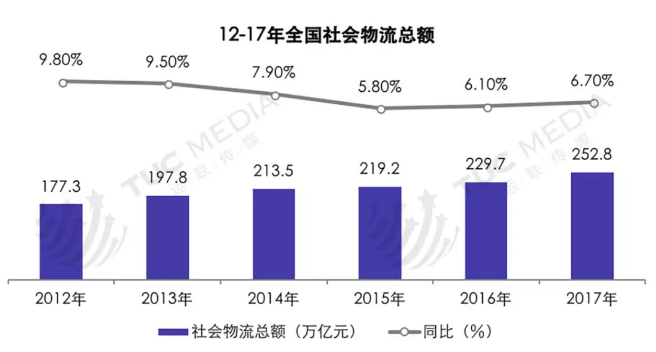
?
1.2 overall logistics transportation market
The volume of domestic logistics and transportation industry has accelerated since 2014. The volume of goods increased to 479.4 billion tons in 2017, and the turnover volume reached 19 trillion and 610 billion tons. Throughout 2017, the overall situation of China's freight transport was stable and the freight volume grew faster and faster. The growth of freight turnover was maintained at a high level.
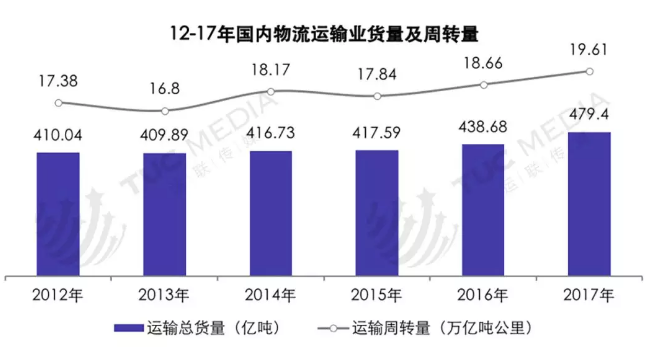
2, market status of subdivision industry
2.1 market status of railway industry
The volume of cargo in the railway transportation industry declined in 2014-2016 years and reached a low of 33.32 million tons in 2016. In 2017, the volume of railway transport freight recovered again, reaching a total of 36.9 billion tons in the year, up 10.7% over the same year last year, and the freight turnover rate of 2 trillion and 700 billion tons, up 13.3% from the same year.
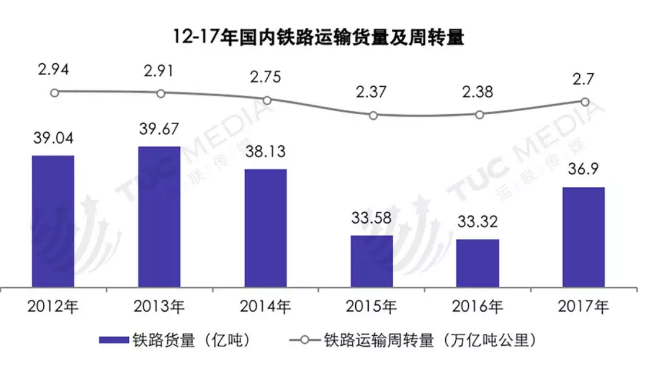
2.2 market status of highway transportation industry
Since 2013, China's highway freight transport has increased rapidly. In 2017, the volume of freight transport completed by the whole country was 368 million tons, and the turnover volume of goods was 6 trillion and 670 billion ton kilometers, an increase of 10.3% and 9.3% respectively compared with 2016.
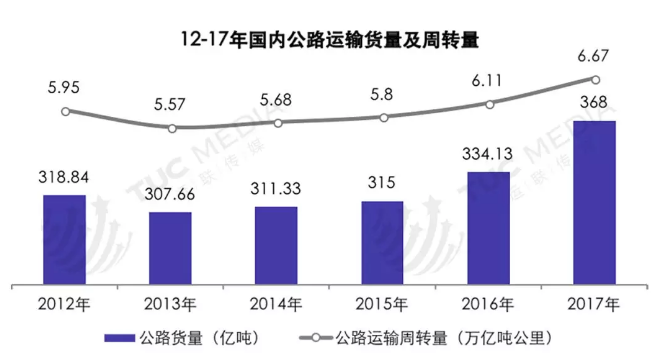
Market status of 2.3 waterway transportation industry
Before 2013, the volume and turnover of water transportation in China fluctuated up and down. In 2013, the volume of cargo was 55.98 million tons and the freight turnover was 7 trillion and 940 billion tons. After 2014, China's waterway transportation industry tended to stabilize and slowly rise. In 2017, the volume of cargo reached 66.6 billion tons, and the transport turnover was 9 trillion and 750 billion tons.
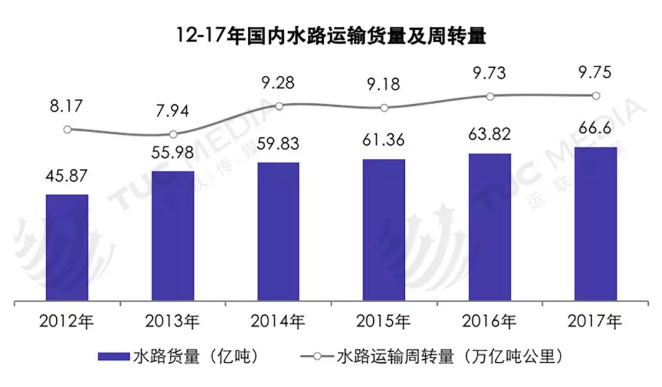
2.4 market status of air transport industry
(1) the volume and turnover of goods continue to rise slowly
Since 2012, the overall freight and turnover volume showed a steady growth trend. In 2017, the turnover of goods reached 24 billion 350 million tons per kilometer, a year-on-year increase of 9.5%, and the volume of goods increased by 5.7% to 7 million 58 thousand tons.
?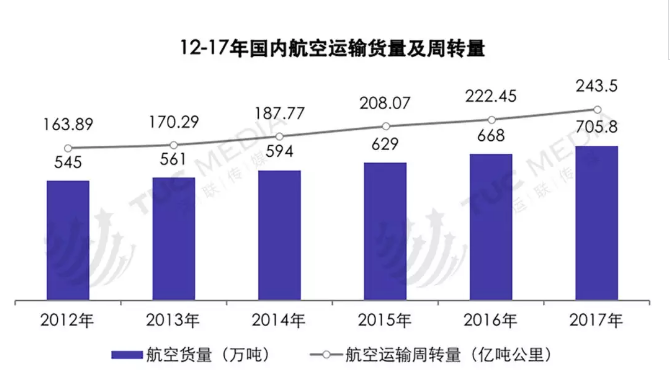

(2) Airport number and cargo throughput continued to rise slowly.
From 2012-2017 years, the number of airports and airports has increased steadily, the number of airports has risen from 183 in 2012 to 229 in 2017, and the cargo mail throughput of the airport is from 11 million 994 thousand tons in 2012 to 16 million 177 thousand tons in 2017, an increase of 7.1% compared to the previous year.
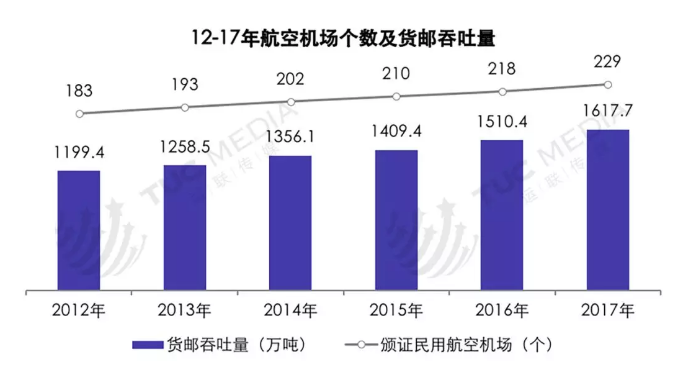
3. Development of air freight forwarding
3.1 development status of Aeronautical freight forwarders
At present, there are about more than 3000 air freight forwarders in the country, about 63% of the agents engaged in international and domestic air freight forwarding business, about 35% agents engaged in the two types of agency business of domestic air freight, and more than 90 overseas airlines have carried out the international freight transport business to China Mainland.
As far as the market is concerned, there are a lot of agents and low concentration, and no air freight forwarding enterprises with larger market influence have yet been formed.
3.2 aeronautical freight forwarding operation model
(1) universal mode of operation in China

(2) International Operation Model
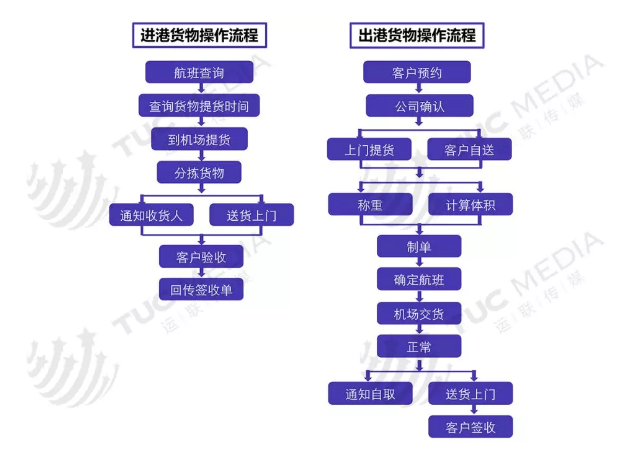 ?
?4, the development pain point of Aviation Freight Forwarder
4.1 the traditional air freight forwarding system is backward, with low systematization and can not effectively connect with the whole chain.
The traditional aeronautical freight forwarding regional operation mode does not have the ability to complete the one-stop management of cargo information. The information degree is low and the upstream and downstream facilities of air freight can not be effectively combined. Thus, the freight forwarders can not be controlled under the chain of air freight industry, and it is difficult to do value-added service.
4.2, unable to own their own brand and products, in the market in a passive demand position.
The traditional aeronautical freight forwarders do not have their own products and can not form their own brands. Each freight generation is based on the personalized service of To B. It can not predict the market and grasp the market demand.
4.3 channels are limited and business diversion capacity is insufficient
The traditional freight forwarding channel is single, the business promotion under the line can not be covered, and online can not achieve effective diversion.
4.4 resources can not be integrated and can not be networked
The aviation market is overly dependent on the traditional air freight forwarding source. More than 3000 air freight forwarders in the country rely solely on the supply of regional aviation market. The source of goods can not form a network layout and large-scale import. Therefore, the domestic air freight forwarders are mostly scattered in a small way.
4.5 aeronautical freight forwarding platform is difficult
The disorderly and disorderly road freight industry, in recent years, the domestic highway freight industry has emerged as a platform integrated enterprise, such as the card line of the world, the logistics, the highway port, Lin An and so on, to integrate the highway freight transportation resources and improve the information level of the highway logistics. Express express express enterprises are divided into business and small packages, and other large freight forwarders are divided into standard parts that can be integrated. Jingdong, Ali's storage and large data make the emergency demand less and less; it is difficult to nibble and integrate the market for freight forwarders, so it is difficult to platform the cargo generation.
5, the breakthrough path of air freight forwarder air cargo network
5.1 the value of air freight network
(1) by establishing air cargo product standards and price standards, customers can choose service products according to their own needs.
(2) to build up a unified brand through integration so as to enhance the bargaining power and industry influence of the company.
(3) gradually expand the scope of business and profitability of enterprises by gradually increasing the global level by foothold in China.
(4) the scale effect should be formed through intensive management, so as to reduce the cost of comprehensive operation.
(5) to achieve high profits by separating the air cargo market from service personalization.
5.2 the size of the air freight network
The air cargo network has gathered 23 strength and has 18 small airports in 224 airports nationwide. The freight forwarders ranked 8 in the top 20 airports in the country.
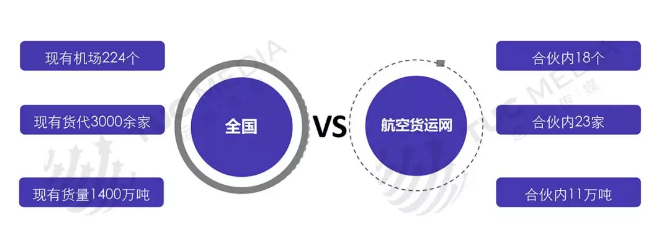
5.3 operation mode
The user sends the demand information flow and provides capital flow, and the air cargo network responds to the supply of information flow and provides logistics services;
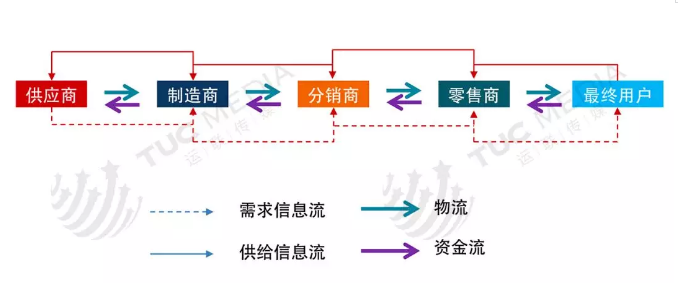
■ Build aviation logistics industry chain and build air cargo network;
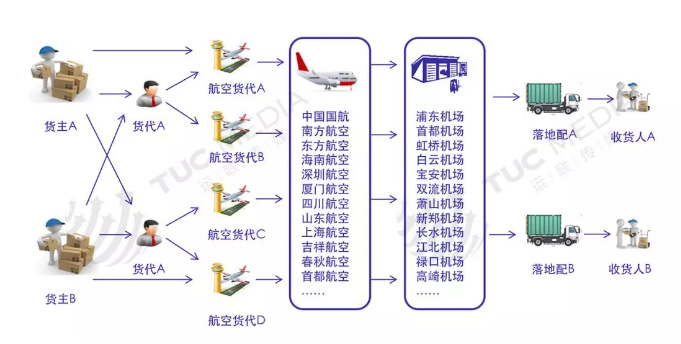
■ ?Building aviation logistics supply chain and creating differentiated service products;
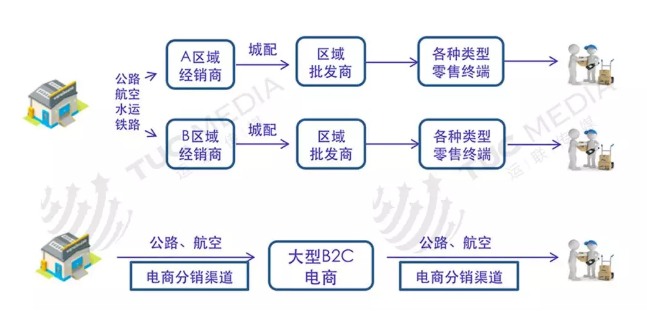
5.4 summary
In the aviation logistics industry, with the continuous improvement of the efficiency of circulation, the crisis has become increasingly apparent to the airlines dispersed throughout the country. only by actively changing the time to upgrade their service efficiency and service level, can we win the future.
The air freight network takes the air freight as the center. Through the difference price in the logistics system, the transaction information in the platform service, the market and the product service in the supply chain financial system, the product service is the profit point. It sets up the multi resource and social cooperation, constructs the intelligent logistics ecosystem, and improves the overall freight comprehensive strength, for the voyage. Air logistics creates high standard service brand and provides fast supply chain logistics service for commodity circulation.
Origin Transport Association Research Institute
Author Zhu Minjie
Editor small L
* original products produced by Yun Lian, if you need to reprint, please contact the authorization.